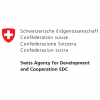Executive Summary
A profile is a text format that is used to describe a person or organization of interest to readers, without making a direct judgement. The water sector is sometimes very complex and mandates of different institutions are not always known. Hence, a profile can help to inform the public on what they can expect or why they should approach a given water sector organization. Profiles can also be written about individuals who champion a water or sanitation related cause or who are at the core of a water-related problem. Read the following paragraphs to know what you should keep in mind, so that the text you are writing qualifies as a profile that could be published in a newspaper.
Introduction
A profile describes a person or organisation of interest to readers. It uses all of the writer’s skills to paint a lifelike portrait in words, of the individual or organisation being profiled. But it does not make a direct judgment on the subject. Readers draw their own conclusions about the profile’s subject through the details and quotes the writer has chosen to include. A profile shows rather than tells.
How is a profile constructed?
A profile uses various styles of storytelling. A popular approach is cinematic in nature, using both close ups and wide angle shots. The written “close up” gives details of the subject or the scene. The “wide angle shot” talks about facts, background, history and other information. The two styles – "close up" and "wide angle" – are used alternately.
The interest and storytelling tension should be evenly maintained throughout the whole profile. A profile should be at least around 800 – 1,000 words long. A shorter profile could be around 500 words long but then it would contain more straightforward information about the subject. A shorter profile is useful when the subject is part of current news and there is not much time for research or interviews. In contrast to a water news story a profile cannot be shortened from the bottom of the story without the loss of vital information.
What kinds of profiles are there?
- A profile of a person.
- A profile of a city or place (e.g. a polluted water source).
- A profile of an institution or organisation (e.g. an innovative water start-up, a ministry that is undergoing a reform process or a NGO).
- Even if the profile is not about an individual person, the human aspects and interaction should still be emphasised and detailed. Otherwise the profile gets dull (see factsheet storytelling).
How is a profilel written?
There are only fairly broad guidelines for the language a profile uses. These are as follows:
- The profile should use descriptive language that appeals to all five senses.
- The profile shows, it doesn’t tell.
- The profile should try to achieve a unique style.
- While the profile includes telling details about the subject, the details should not be random but should be consistent with, or important to, the story being told.
Checklist
- Is there a central question the profile piece should be answering about the subject?
- Which details about the subject are really meaningful?
- Are there friends, enemies, colleagues or other relevant opinions that could be included in this profile?
- Have the ideas of “close up” and “wide angle” been well woven together in the profile?
- Does the portrait maintain story telling tension through to the end?
Shortcuts to Journalism: The Basics of Print, Online and Broadcast Reporting
When basic questions about journalism come up, this handbook, written and produced by Media in Cooperation and Transition (MICT), provides clear, brief and precise answers. Shortcuts to Journalism isn’t just for journalists – it’s also helpful for non-journalists. Download the English version here or the Arabic version here.
Schmidt, E., Tirok, M. and Bösch, M. (2016): Shortcuts to Journalism: The Basics of Print, Online and Broadcast Reporting. Berlin, Germany: Media in Cooperation and Transition gGmbH PDFThe Thirst is real: Water Scarcity and Solutions in the Middle East
A Blog of the UCLA Center for Middle East Development.


